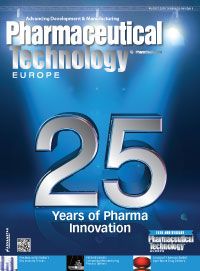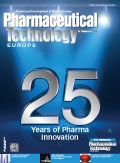Past, Present and Future of Softgel Technologies
Pharmaceutical Technology Europe
Softgels are now being recognised as one of the preferred dosage forms for the treatment of pain, eye conditions, cough and cold, as well as allergy.

Softgels on the Horizon
Softgel technologies offer an alternative drug-delivery vehicle for lead candidates that are difficult to formulate.
The origin of the current softgel manufacturing process, the rotary die principle, dates back to a 1932 patent. The manufacturing principle has not changed significantly over the decades but the technology certainly has evolved. Initially applied in low-end consumer sectors for cosmetics, nutritional products and even bath pearls and paint balls, the trends in using softgels for prescription and consumer healthcare markets have generated major shifts in demand.

Pharmaceutical Technology Europe25th Anniversary Issue
The era of high throughput screening has led to an expanded range of molecules with chemical structures leading to poor bioavailability and high toxicity, giving rise to significant formulation challenges. This problem has led to various commercial products formulated in softgels to overcome bioavailability challenges (e.g., amprenavir) and manage low dose and toxicity (e.g., dutasteride).
Softgels are now being recognised as one of the preferred dosage forms for the treatment of pain, eye conditions, cough and cold, as well as allergy. The easy-to-administer appeal and potential for quicker onset of action make softgels a popular dosage form (e.g., ibuprofen softgels). Despite its popularity, it is still regarded as niche technology in an industry dominated by tablet formulations, partly because in pharmaceutical sciences education, there is more focus on the traditional technologies such as tablets, cream, ointments and powder sachets. Also many companies have little internal experience with the softgel technologies and need to contract third parties for both development and manufacturing.
This situation opens up opportunities as large and mid-sized pharmaceutical companies rationalise R&D and rely more on outsourcing. The use of contractors, where much of the knowledge of softgel technologies resides, provides pharmaceutical companies the opportunity to capitalise on market trends, such as switching from prescription to over-the-counter products or developing patient-centred formulations. In addition, CDMOs are innovating softgel technologies, which include enteric-release (Entericare) and chewable (Chewels) softgel technologies. The future prospects of softgel technologies are looking bright.

About the Author
Kaspar van den Dries, PhD, is senior director formulation sciences, solid dosage forms and softgels at Patheon.

Pharmaceutical Tariffs Are Imminent: How Industry is Bracing for Impact
April 16th 2025On April 14, 2025, the Trump Administration launched a national security-driven investigation into pharmaceuticals, a move that will likely result in tariffs being placed on pharmaceutical drugs, ingredients, and other components that are imported from outside of the United States.
Drug Solutions Podcast: A Closer Look at mRNA in Oncology and Vaccines
April 30th 2024In this episode fo the Drug Solutions Podcast, etherna’s vice-president of Technology and Innovation, Stefaan De Koker, discusses the merits and challenges of using mRNA as the foundation for therapeutics in oncology as well as for vaccines.